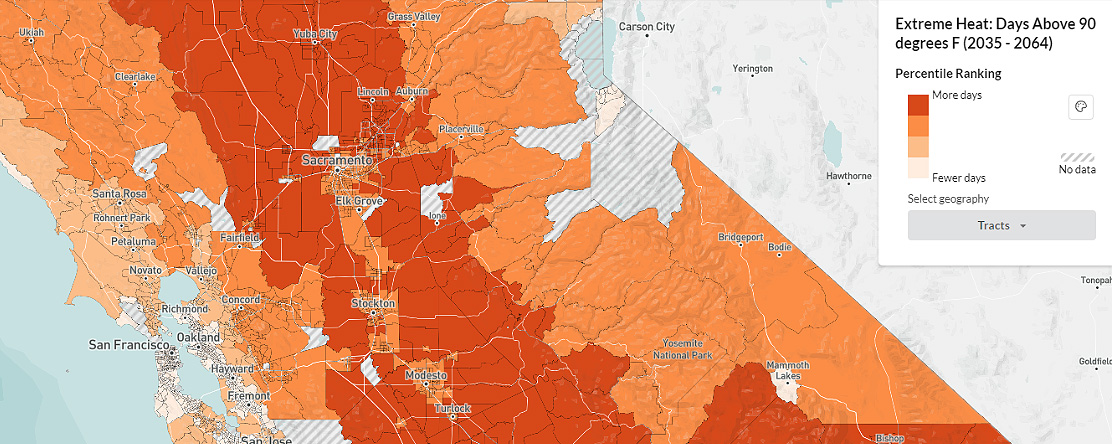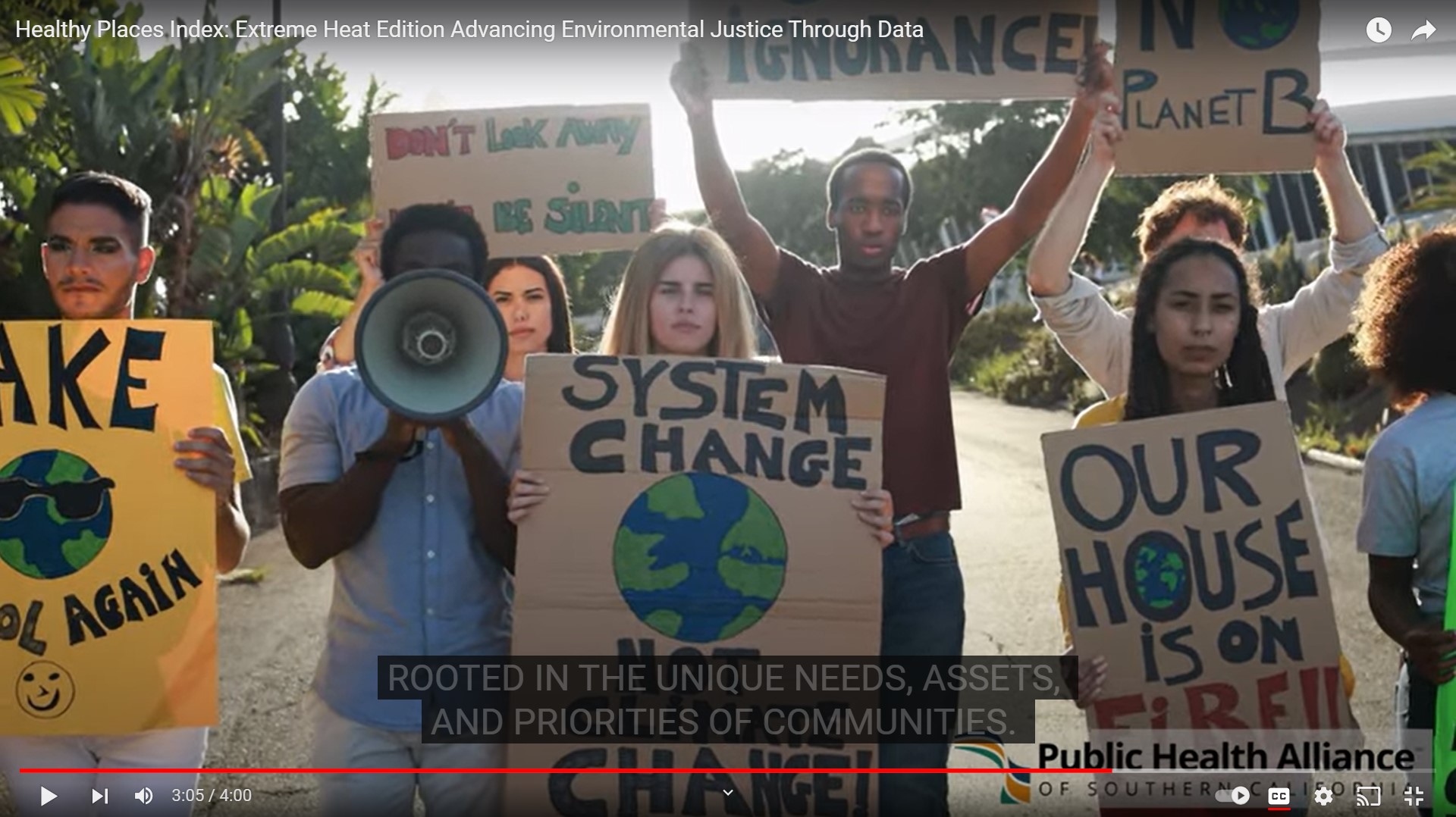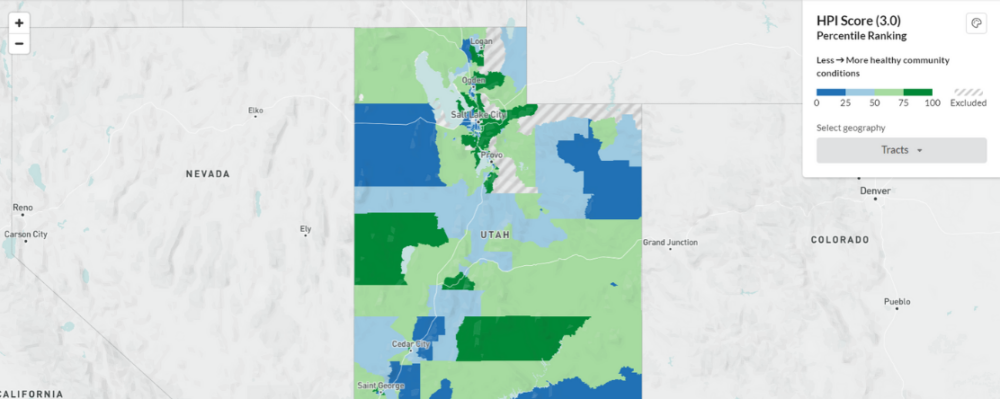
The Healthy Places Index: Extreme Heat Edition

The Healthy Places Index: Extreme Heat Edition (HPI: EHE) tool allows community groups, government entities, schools, tribal organizations, community members and other key audiences to scan their community and understand which areas and populations will be most affected by heat this season and in the years to come. They can also determine what protections or interventions are most needed to address these challenges.
The tool was developed by the Public Health Institute’s Public Health Alliance of Southern California in partnership with the UCLA Luskin Center for Innovation.
Explore HPI: EHEHow to Use HPI:
- Journalists: From climate to education and social justice to daily news, journalists covering the complex realities of rising temperatures can use the HPI: EHE to streamline the storytelling process. Curious about which zip codes or school districts within a specific city can be most impacted? It’s there. Need to identify subpopulations disproportionately affected within neighborhoods to interview? It’s covered. HPI: EHE is more than a guide—it’s a tool that empowers reporters to visualize and compare how even unincorporated communities are bracing for unprecedented heat waves. With access to crucial data and visualizations, journalists can use HPI: EHE to help pitch compelling stories, uplift the voices of those most impacted, craft hard-hitting questions for officials, and tell stories that make a difference
- School districts: Extreme heat has led to school closures in under-resourced areas. Using HPI: EHE, school administrators can select the “School Districts” geography and see what districts will likely be most impacted by heat. Administrators can then head to “Resources to Address Extreme Heat” to find funding programs to weatherize classrooms and playgrounds.
- Community serving organizations: Organizations in communities facing historic and ongoing divestment can utilize HPI: EHE to identify many funding programs-ranging from grant initiatives that support tribal organizations in areas affected by pollution- to programs for urban greening projects and more.
- Community members: The HPI: EHE allows community members to identify programs like low-income weatherization to help pay for high energy costs and make their home more energy efficient, (i.e., air conditioners replacement or repair for families working to make ends meet).

The Healthy Places Index Extreme Heat Edition is more than data on projected extreme heat in California - it's designed to help you take that data into action. It gives you the tools to find the places most sensitive to the impacts of extreme heat and to discover resources and opportunities to build resilience together with our communities.Helen Dowling, MPH
Director of Data Initiatives at the Alliance

Community involvement was crucial during the Healthy Places Index Extreme Heat Edition’s development to ensure it meets the needs and interests of those most affected by climate change. Community partners and stakeholders played an active role in shaping its features, functions, and data, making it both well-informed and effective.Ruth Engel, Ph.D.
Project Manager for Environmental Data Science at the UCLA Luskin Center for Innovation.

The Healthy Places Index Extreme Heat Edition can help answer crucial questions, such as, ‘How can we enhance our community's resilience?’, ‘Where should we invest in expanding cooling center coverage’ or ‘Where should we fund an urban greening project.’Helen Dowling, MPH
Director of Data Initiatives at the Alliance
HPI Ethical Use Guidelines: Why Ethical Use Matters
The ethical use of the HPI is a commitment to fostering positive change in a responsible and inclusive manner. These guidelines are born from our conviction that data, when harnessed ethically, can be a force for good. It is our shared responsibility to ensure that the HPI serves as a catalyst for equitable health improvements, inspiring actions that uplift communities rather than perpetuate disparities.

Climate change, the most pressing public health crisis of our era, is impacting communities unequally. Prosperity starts with place: a healthy community is a resilient community, and a resilient community is a healthy one. Now, more than ever, there is a need for comprehensive, equitable data and innovative tools to guide climate resiliency-building efforts, like the Public Health Alliance of Southern California’s Healthy Places Index Extreme Heat Edition (HPI: EHE.) Developed in partnership with the University of California, Los Angeles (UCLA) Luskin Center for Innovation, HPI: EHE visualizes neighborhood-level heat impacts and community resilience factors. HPI: EHE allows community organizations, government entities, schools, tribal organizations, community members, and other key stakeholders to scan their communities and understand which areas and populations could be most affected by heat now and in the years to come.
Work With Us
You change the world. We do the rest. Explore fiscal sponsorship at PHI.
Support Us
Together, we can accelerate our response to public health’s most critical issues.
Find Employment
Begin your career at the Public Health Institute.


